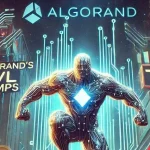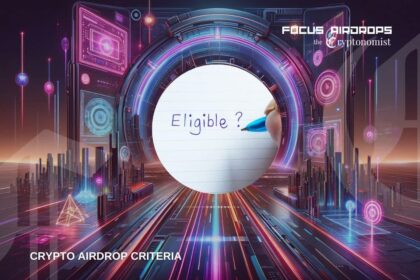The internet has come a long way since its inception. It has evolved from static web pages to interactive platforms that connect billions of people across the globe. Yet, as powerful as the current Web2 is, it has its limitations—centralized control, data exploitation, and lack of transparency. Enter Web3, the next iteration of the internet that promises to revolutionize how we interact, transact, and share information online.
In this article, we’ll explore how Web3 is transforming the internet, its key features, the technology behind it, and the opportunities and challenges it presents.
Introduction: The Dawn of Web3
The term “Web3” represents a major paradigm shift in the way the internet operates. Coined by Ethereum co-founder Gavin Wood, Web3 seeks to address the shortcomings of Web2 by creating a decentralized internet powered by blockchain technology. Unlike Web2, where large corporations control data and platforms, Web3 puts the power back into the hands of users.
At its core, Web3 is about:
- Decentralizing the internet.
- Enhancing user privacy and ownership.
- Building trustless systems that eliminate the need for intermediaries.
This revolution is already underway and promises to fundamentally alter industries such as finance, gaming, art, and more.
Understanding Web3: The Evolution of the Internet
To understand how Web3 is revolutionizing the internet, it’s important to look at the evolution of the web:
Web1: The Read-Only Era
Web1, the first version of the internet, was predominantly static. Users could only consume information from websites but had limited interaction.
- Websites were basic and text-heavy.
- There was no user-generated content.
- Examples include Netscape and GeoCities.
Web2: The Read-Write Era
Web2 introduced interactivity, enabling users to create and share content on platforms like Facebook, YouTube, and Twitter. However, this came at a cost:
- Data is controlled by centralized entities.
- Users do not own their content or data.
- Monetization benefits corporations more than creators.
Web3: The Read-Write-Own Era
Web3 is the next leap in the internet’s evolution. It is decentralized, transparent, and user-centric. Key features of Web3 include:
- Decentralization: Data is stored on distributed networks rather than centralized servers.
- User Ownership: Individuals have full control over their data and digital assets.
- Trustless Systems: Transactions are verified by blockchain instead of relying on intermediaries.
Visual Example of Web Evolution:
A comparison of Web1, Web2, and Web3.
How Web3 Is Revolutionizing the Internet
1. Decentralization: Breaking Free from Centralized Control
In Web2, a handful of tech giants control the majority of internet traffic and data. This centralization has led to:
- Privacy concerns.
- Data breaches.
- Monopoly-like control over the digital ecosystem.
Web3 eliminates centralized servers by using blockchain networks. Each piece of data is stored across a distributed network of nodes, making it:
- Censorship-resistant.
- Less vulnerable to hacking.
- More transparent.
Example: File Storage in Web3
Platforms like IPFS (InterPlanetary File System) and Arweave offer decentralized file storage, ensuring that data remains accessible and cannot be tampered with.
Learn more through this video:
2. Enhanced Privacy and Data Ownership
In Web2, users unknowingly give up their personal data in exchange for “free” services. Web3 flips the script:
- Users retain full ownership of their data.
- Data sharing requires user consent and is facilitated through smart contracts.
Example: Decentralized Identity
Platforms like ENS (Ethereum Name Service) and DID (Decentralized Identifiers) allow users to manage their digital identities without relying on third-party logins like Google or Facebook.
3. The Financial Revolution: Decentralized Finance (DeFi)
Web3 is democratizing finance through Decentralized Finance (DeFi), a system where financial transactions occur without intermediaries like banks. Benefits include:
- Faster transactions.
- Lower fees.
- Access to financial services for the unbanked.
Popular DeFi Applications
- Uniswap: A decentralized exchange for trading cryptocurrencies.
- Aave: A platform for lending and borrowing digital assets.
4. Empowering Creators Through NFTs
Web3 is transforming the creator economy with Non-Fungible Tokens (NFTs). These are unique digital assets that prove ownership of items like:
- Art.
- Music.
- Virtual real estate.
Example of NFT Impact
Artists can now sell their work directly to collectors without intermediaries. Platforms like OpenSea and Rarible facilitate these transactions, ensuring creators earn royalties.
5. Gaming and Virtual Worlds
Web3 is revolutionizing gaming by enabling true ownership of in-game assets through blockchain. Players can:
- Buy, sell, and trade assets as NFTs.
- Earn cryptocurrency by playing games (play-to-earn model).
Example: Axie Infinity
A blockchain-based game where players earn cryptocurrency by battling virtual creatures.
6. Decentralized Applications (DApps)
DApps are a cornerstone of Web3. Unlike traditional apps, DApps:
- Run on blockchain networks.
- Are open-source and transparent.
- Cannot be censored.
Examples of DApps
- MetaMask: A crypto wallet for managing digital assets.
- OpenSea: A marketplace for NFTs.
Technologies Powering Web3
Web3 wouldn’t be possible without groundbreaking technologies such as:
- Blockchain: A decentralized ledger that records transactions.
- Smart Contracts: Self-executing contracts with predefined rules.
- Cryptography: Ensuring secure and private communication.
- Decentralized Autonomous Organizations (DAOs): Communities that make decisions collectively.
Challenges of Web3
Despite its promise, Web3 faces several hurdles:
- Scalability Issues: Blockchain networks struggle to handle large transaction volumes.
- Complexity: The technology is difficult for beginners to understand.
- Energy Consumption: Some blockchains, like Bitcoin, are criticized for their environmental impact.
- Regulatory Uncertainty: Governments are still determining how to regulate decentralized systems.
The Future of Web3
Web3 is still in its infancy, but its potential is undeniable. In the future, we can expect:
- Increased adoption across industries like finance, healthcare, and education.
- More user-friendly interfaces to simplify the Web3 experience.
- Greater integration with emerging technologies like AI and IoT.
Projected Impact of Web3 by 2030:
FAQs
What is Web3 in simple terms?
Web3 is the next generation of the internet that uses blockchain to decentralize control and give users ownership of their data.
How is Web3 different from Web2?
Web2 relies on centralized platforms, while Web3 operates on decentralized networks, offering greater transparency and user control.
What industries will benefit most from Web3?
Industries like finance, gaming, healthcare, and education are expected to see significant transformations due to Web3.
How can I get started with Web3?
Begin by setting up a crypto wallet (e.g., MetaMask), exploring decentralized applications (DApps), and learning about blockchain technology.
Is Web3 secure?
Web3 leverages cryptography and decentralization to enhance security, but users must remain cautious about scams and vulnerabilities.
What are some popular Web3 platforms?
Ethereum, Polkadot, Solana, and Avalanche are leading platforms in the Web3 space.
Conclusion
Web3 is not just a technological advancement; it’s a complete reimagining of the internet. By decentralizing control, empowering users, and fostering transparency, Web3 has the potential to address the flaws of the current internet and create a more equitable digital landscape. While challenges remain, the opportunities Web3 presents are truly transformative.










